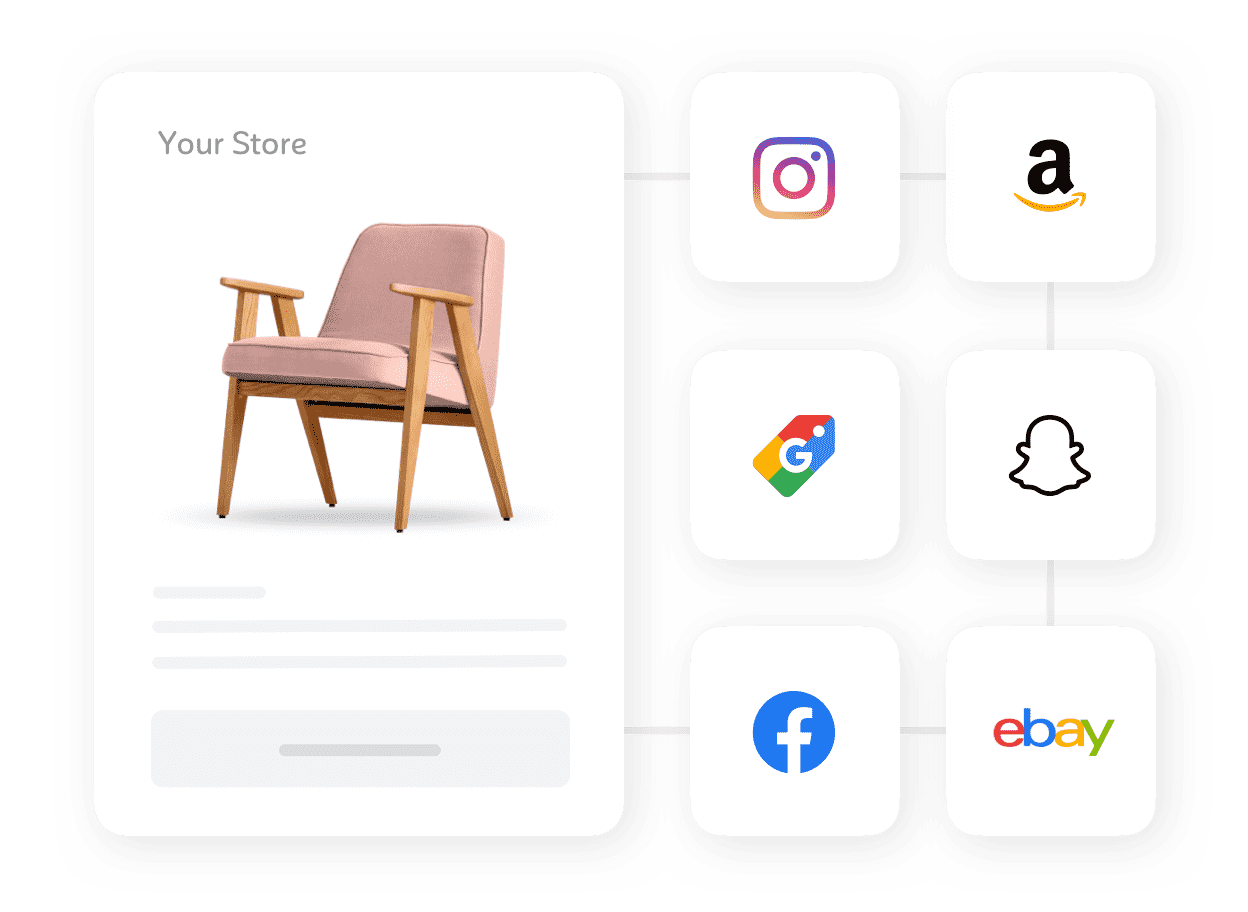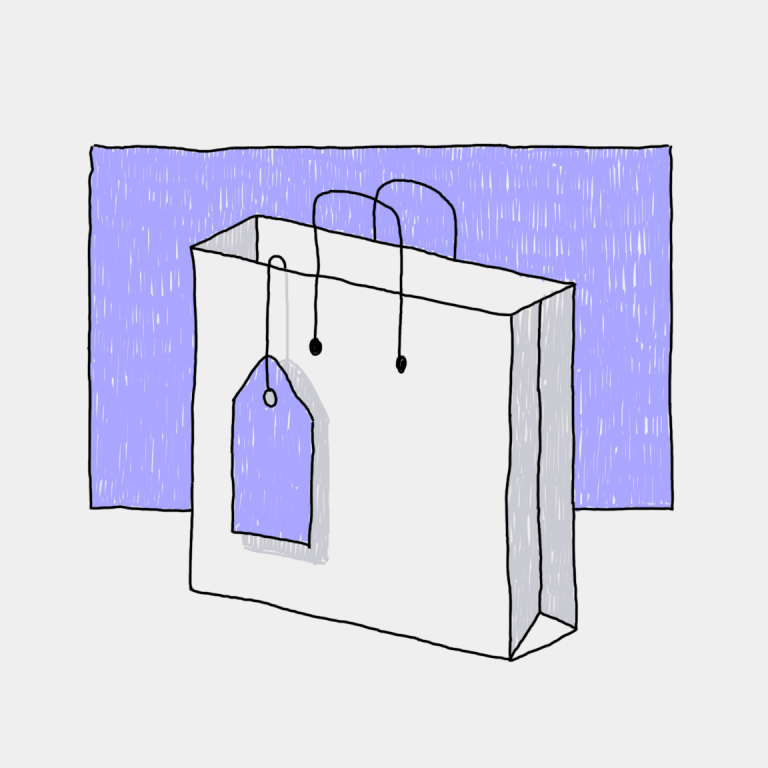Prototipe dikenal sebagai bagian penting dan tak terpisahkan dari proses desain; mereka pada dasarnya bertindak sebagai lampu hijau dalam hal produksi dan kesuksesan suatu produk. Jika dijelaskan secara singkat, prototipe adalah tentang demonstrasi, otentikasi, konfirmasi, dan validasi. Anda dapat mengandalkan mereka untuk mengubah ide teoretis menjadi sistem kerja yang lebih layak dan dapat diuji atau dievaluasi dengan mudah.
Jika Anda memiliki ide produk baru, apakah itu alat penata rambut baru, aplikasi ponsel cerdas, atau sekadar peralatan dapur inovatif, apa pun itu, prototipe akan membantu Anda menunjukkan kepada investor dan pembeli di masa depan bahwa produk Anda layak untuk mereka. waktu dan minat.
Dalam artikel ini, kita akan menjelaskan apa sebenarnya prototipe produk, apa yang diperlukan, dan apa yang tidak, termasuk kesalahan umum yang dilakukan oleh wirausahawan baru saat membuat model prototipe produk mereka. Ingatlah bahwa mempelajari prototipe produk dan faktor-faktor utama yang perlu diingat saat membuatnya adalah langkah pertama dan mungkin paling penting yang dapat Anda ambil sebelum mewujudkan ide produk Anda. Tidak diragukan lagi, hal ini bisa membuat Anda siap untuk sukses atau, yang tidak diinginkan, gagal.
Untungnya, Anda datang ke tempat yang tepat. Kami di sini untuk membantu Anda mempelajari semua tentang prototipe produk sehingga Anda tahu persis di mana harus memulai desain Anda. Ikuti terus hingga akhir untuk mengetahui beberapa tip pembuatan prototipe dan tawaran yang tidak dapat Anda tolak.
Apa Itu Prototipe Produk?
Prototipe adalah pratinjau atau contoh awal dari suatu produk atau ide yang Anda rencanakan untuk diinvestasikan dan pada akhirnya direproduksi dalam jumlah besar. Kapan pun ada peluang investasi baru, sebelum terjun ke produksi massal dan mempertaruhkan modal apa pun, pertama-tama Anda harus menemukan cara untuk mengomunikasikan ide Anda kepada calon investor dengan cara yang dapat dimengerti dan sering kali nyata.
Prototipe merupakan bagian dari hampir semua industri yang dapat Anda pikirkan, dan sering kali prototipe menjadi landasannya pengujian produk dan validasi desain konsep. Arsitek, desainer, insinyur, pembuat film, pengembang aplikasi, dan banyak lagi, mengandalkan prototipe untuk mensimulasikan produk mereka dan menarik investor.
Pada akhirnya, pada intinya, kita dapat mendefinisikannya sebagai replika cepat dari produk atau ide asli yang dapat digunakan sebagai alat untuk mendapatkan investasi pembiayaan, meningkatkan kinerja Anda. Crowdfunding kampanye, atau cukup atur awal proses desain. Setelah dibuat, mereka dapat disempurnakan atau dimodifikasi untuk meningkatkan fungsi atau mengakomodasi permintaan penonton.
Tujuan dari prototipe
Saat kita mendefinisikan apa itu model prototipe, kita dapat mempertimbangkan tujuan utamanya untuk menyediakan sampel kerja yang nyata yang dapat diuji dan dievaluasi kesalahan dan kemanjurannya, tidak seperti ide teoretis. Model prototipe membantu desainer dalam memvisualisasikan dan membuat produk sebenarnya.
Apa yang biasanya disertakan dalam prototipe produk?
Sebagai bagian penting dari proses investasi awal, model prototipe seringkali menyertakan aspek dan fitur utama dari ide awal. Mengingat mereka sering kali merupakan pendahulu dari proses manufaktur, mereka seringkali dapat menyertakan warna spesifik produk, kemasan, visual online, atau elemen navigasi jika itu terjadi pada situs web atau aplikasi misalnya.
Kuncinya adalah memasukkan segala hal yang membantu bisnis atau calon investor mengambil keputusan. Inilah sebabnya mengapa penting untuk mencurahkan waktu dan upaya yang tepat untuk menjadikannya sampel yang bisa diterapkan dan dapat diandalkan. Jika gagal dikirimkan, itu juga akan membuktikan kemampuan produk aslinya.
Prototipe bisa cepat dan kasar. Prototipe biasanya tidak dimaksudkan agar terlihat seperti versi final. Selama dapat digunakan pada evaluasi awal produk dan awal proses desain, tidak harus sempurna.
Rapid Prototyping
Faktanya, berbicara tentang prototipe yang cepat dan kasar, sebenarnya ada istilah yang digunakan untuk menggambarkan jenis pembuatan prototipe tertentu yang dikenal sebagai prototyping cepat. Bidang ini melibatkan proses pembuatan versi produk atau ide yang berfungsi dengan cepat, yang dapat diuji dan dievaluasi. Tujuan utamanya adalah untuk mempercepat proses prototipe dan pengembangan produk agar dapat cepat diluncurkan dan diproduksi.

Skema pembuatan prototipe cepat. Sumber gambar.
Rapid prototyping terus muncul sebagai konsep yang disukai dalam dunia bisnis saat ini, dimana perusahaan terus-menerus dibombardir dengan peluang baru dan perubahan pasar. Hal ini membantu mereka tetap mengikuti tuntutan dan persaingan masyarakat seiring mereka didorong untuk mengembangkan produk baru agar tetap relevan.
Meskipun memiliki berbagai keuntungan dan waktu yang menarik, pembuatan prototipe cepat dapat memengaruhi akurasi dan seringkali menghasilkan biaya yang sama mahalnya dengan pembuatan prototipe biasa.
Alat pembuatan prototipe cepat
Ada beberapa alat atau platform pembuatan prototipe cepat yang sering digunakan oleh banyak orang untuk mempermudah prosesnya. Di antara beberapa yang paling populer, dapat kita temukan InVision, Pembentuk, Studio Origami, dan Adobe XD. Baik Anda seorang pengembang, pemilik bisnis, pembuat kode, atau sekadar seseorang yang memiliki ide, Anda mungkin dapat memanfaatkan salah satu hal ini untuk membuat prosesnya tidak terlalu menantang.
Contoh Prototipe
Model prototipe reguler atau cepat dapat berupa digital, augmented reality, atau bahkan dibuat dari kertas kerajinan hingga batu bata.
Saat merencanakan model Anda, pertimbangkan seberapa realistis membuat versi nyata atau fisik, biaya produksi, atau bahkan apakah yang perlu Anda tunjukkan kepada investor hanyalah ukuran dan bentuk produk. Selain itu, prototipe dapat bervariasi dari sepotong kawat atau kayu sederhana yang berbentuk seperti produk Anda, hingga a model 3D menjelaskan setiap fitur dan kemampuan produk.
Prototipe dapat berupa apa saja mulai dari:
- Sketsa atau diagram
- Pencetakan 3D
- Sebuah Bingkai Gambar
- Sebuah Video
- Simulasi Virtual

Prototipe Douglas SB2D Destroyer di terowongan angin untuk pengujian. Sumber gambar.
Kesimpulannya, meskipun yang Anda miliki hanyalah selembar kertas, menggambar model Anda juga dapat berguna dalam pembuatan prototipe. Namun, sebagian besar pengusaha atau profesional sering mencari alternatif modern seperti ini
Bagaimana menentukan model prototipe terbaik untuk Anda
Seperti yang telah kita bahas secara singkat di atas, ketika memilih desain prototipe, perancang harus mempertimbangkan tujuan atau hasil akhirnya. Pertimbangkan apakah model yang telah selesai akan ditampilkan pada acara atau pertemuan bisnis, dalam hal ini, Anda mungkin ingin menyewa pengembang atau mengandalkan perangkat lunak pembuatan prototipe yang andal.
Selalu pilih pilihan yang solid, dapat diuji, dan berfungsi, kecuali prototipe tersebut hanya untuk tujuan desain. Yang terakhir, namun tidak kalah pentingnya, jangan membuat kesalahan dengan mengesampingkan keselamatan. Dalam banyak kasus, saat membuat model fisik, mungkin karena kecepatan produksi yang terkait dengan pembuatan prototipe, desainer mungkin mengabaikan hal-hal seperti ujung yang runcing, pecahan kaca, atau bahkan menggunakan teknologi lama yang rentan terbakar.
Kesalahan Umum dalam Pembuatan Prototipe yang Harus Dihindari
Sekarang setelah Anda memahami apa itu prototipe produk, Anda mungkin bertanya pada diri sendiri: apa yang salah saat membuat prototipe?
Meskipun desain prototipe dapat berupa apa pun yang Anda inginkan, Anda mungkin menemukan beberapa kesalahan umum yang seringkali dapat mengalihkan perhatian Anda dari tujuan atau membuat audiens Anda patah semangat.
Untuk membantu Anda menghasilkan replika awal terbaik dari produk Anda, berikut adalah daftar singkat kesalahan umum yang harus dihindari:
Jangan Terlalu Maju. Banyak pengusaha baru melakukan kesalahan umum dengan membuat prototipe terlalu dini. Mereka membiarkan dorongan dan kegembiraan menguasai diri mereka dan menciptakan model yang pada akhirnya tidak memiliki sebagian besar fitur dan karakteristik utama produk akhir. Luangkan waktu untuk menganalisis ide Anda, pikirkan segala sesuatu yang membuatnya menarik dan inovatif. Jangan lupa pembuatan prototipe bukanlah langkah pertama dalam proses desain, Anda harus terlebih dahulu memunculkan ide produk dan memahaminya.
Jangan Menghabiskan Terlalu Banyak Waktu. Meskipun Anda ingin memikirkan ide produk sebelum memulai template, Anda tidak ingin menginvestasikan terlalu banyak waktu dalam proses pembuatan prototipe. Ingatlah bahwa desain prototipe bukanlah produk akhir dan penataan ulang selalu dapat dilakukan. Idealnya, Anda hanya membutuhkan waktu paling lama sekitar satu hingga dua bulan untuk menyelesaikan prototipe ide awal Anda.
Jangan Membuat Prototipe Tanpa Rencana. Tanpa rencana, perhatian Anda akan mudah teralihkan dari tujuan utama atau fitur utama produk Anda. Anda pasti ingin memiliki rencana terperinci yang memberi tahu Anda ke mana harus pergi dari titik A ke titik B. Anda ingin memastikan model Anda kohesif dan mudah dipahami. Hindari fitur yang rumit dan belum selesai.
Jangan Lupakan Tentang Panduan Interaksi Anda. Setelah ide Anda siap, Anda ingin memastikan audiens Anda mudah mencoba dan mengujinya. Ya, Anda akan mengetahui segalanya tentang model Anda, cara kerjanya, di mana harus mengklik untuk mendapatkan reaksi spesifik, dll.
Namun, audiens Anda tidak tahu apa yang membuat produk Anda istimewa, atau cara kerjanya, dan mungkin menekan tombol yang salah dapat mengakibatkan hasil produk yang tidak diinginkan. Ingatlah pengalaman pengguna saat membuat prototipe Anda dan berikan panduan sederhana dan solid tentang cara berinteraksi dengan model Anda.
Daftarnya bisa terus bertambah jika menyangkut kesalahan umum pembuatan prototipe. Hal utama yang perlu diingat adalah memikirkan ide Anda dan fokus pada apa yang diharapkan audiens Anda terima.
Kapan Prototipe Produk Siap?
Sebelum prototipe siap, prototipe harus melalui serangkaian fase dan tahapan produksi yang berbeda. Hal ini terjadi karena setiap tahap menawarkan serangkaian elemen penting unik yang diperlukan untuk keberhasilan produk akhir.
Prosesnya biasanya dimulai dengan landasan dan dasar dari ide produk asli, seiring dengan dijabarkannya sebuah rencana untuk membawanya dari ide teoretis ke ide yang lebih layak. Pengembang kemudian melanjutkan untuk mengidentifikasi kelemahan dan perbaikan apa yang mungkin diperlukan. Setelah model diuji dan dilengkapi sepenuhnya, maka model tersebut dianggap siap.
Perhatikan bahwa kami tidak menyatakan “setelah model terlihat persis seperti produk jadi”. Kuncinya adalah menghasilkan produk yang sepenuhnya optimal dan berfungsi yang menyerupai bahan yang diperlukan dan aspek desain dari produk aslinya.
Tip untuk Membuat Prototipe Produk Anda
Saat kita mendekati akhir dari tinjauan singkat prototipe produk ini, mengapa kita tidak meluangkan beberapa menit terakhir perhatian Anda untuk memperkuat apa yang telah kita pelajari hari ini dan membahas beberapa tip pembuatan prototipe cepat?
Ini dia!
- Penelitian dan penelitian lebih lanjut. Kenali audiens pasar Anda, persaingan dan bagaimana produk Anda dapat menjadi sebuah industri
pengubah permainan. - Pahami anggaran dan biaya produksi Anda. Sebelum Anda menginvestasikan waktu pada ide tertentu, pastikan Anda memiliki dana dan sumber daya yang cukup untuk menyiapkan prototipe. Jangan lupakan biaya produksi di masa depan.
- Pilih sesuatu yang Anda sukai dan lakukan yang terbaik yang Anda bisa. Saat Anda memutuskan apa ide produk Anda, pilihlah sesuatu yang menurut Anda mewakili Anda dan minat Anda. Dan setelah Anda menentukan pilihan, pastikan untuk menghormati setiap tahapan proses dan memberikan yang terbaik yang Anda bisa.
Memiliki Prototipe Produk Menjadi Selangkah Lebih Dekat
Pada akhirnya, memiliki model prototipe akan membawa Anda lebih dekat ke tujuan akhir yaitu meluncurkan ide produk Anda secara resmi ke pasar. Setelah ide produk Anda disetujui dan dianggap berhasil melalui prototipe yang sudah jadi, Anda dapat bersiap untuk memulai fase berikutnya dan membuat situs e-niaga agar pelanggan dapat membeli dan mempelajari lebih lanjut tentang produk jadi Anda.
Anda dapat melihat panduan utama kami untuk membuat situs web online dan mendaftar dengan Ecwid untuk membuatnya. Anda akan memiliki akses ke pustaka tema dan fitur yang tersedia dan dirancang untuk membantu Anda selama seluruh proses.
Jangan lupa prototipe Anda tidak harus sempurna tetapi cukup bagus untuk memberikan informasi yang diperlukan kepada audiens untuk mempelajari produk asli Anda dan membawa Anda ke langkah berikutnya dan terakhir yaitu meluncurkan bisnis Anda sendiri. Kabar baiknya adalah menghasilkan ide dan desain produk adalah bagian paling menantang dari keseluruhan proses ini. Kami mendorong Anda untuk mengukur, merancang, menyempurnakan, memulai dari awal lagi jika perlu, namun yang terpenting bersenang-senang!
- Ide Produk Baru untuk Dijual Online: Tren Saat Ini
- 15+ Produk Trending Teratas untuk Dijual pada tahun 2023
- Cara Menemukan Produk untuk Dijual Secara Online
Produk Ramah Lingkungan Panas Ide untuk Berjualan Online- Produk Terbaik untuk Dijual Online
- Cara Menemukan Produk Trending Untuk Dijual Secara Online
- Cara Menciptakan Permintaan Produk Unik
- Bagaimana Mengembangkan Produk Baru yang Memecahkan Masalah
- Cara Mengevaluasi Kelayakan Produk
- Apa itu Prototipe Produk
- Cara Membuat Prototipe Produk
- Bagaimana Mencari Tahu Tempat Menjual Produk Anda
- Mengapa Anda Harus Menjual Produk yang Tidak Menguntungkan
- Produk White Label Yang Harus Anda Jual Secara Online
- Label Putih vs Label Pribadi
- Apa itu Pengujian Produk: Manfaat dan Jenisnya








